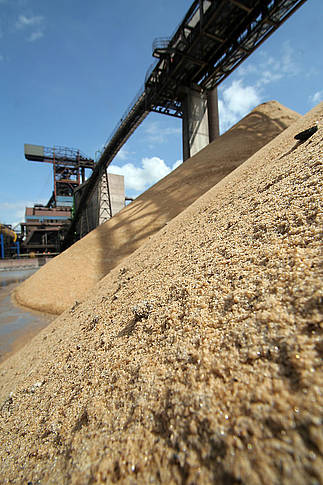Cement / Concrete
Today, the main by-product of hot metal production in blast furnaces is granulated blast furnace slag (GBS, see statistics). After grinding to cement fineness (GGBS = ground granulated blast furnace slag) it is used as a main constituent of cement or as a separate concrete addition.
Since the discovery of the latent hydraulic properties of glassy granulated slag by the German blast furnace operator Emil Langen in 1861/62, granulated blast furnace slag rapidly gained popularity. In 1909, the first German standard for Portland-slag cement (slag contents < 30 %) was published and in 1917 the first standard for blast furnace cement (slag contents < 85 %) appeared. Other countries followed.
In the United Kingdom (UK), for example, the first relevant standard was published in 1923. 1986 the first British standard for ground granulated blast furnace slag as a concrete addition was released. Within the current European cement standard EN 197-1, nine cements are listed which may – besides Portland cement clinker - contain slag contents between 6 % and 95 %. Finally, in 2006 the European standard EN 15167 for GGBS as a concrete addition was published.
Blast furnace slag cement or combinations of cement / GGBS have a high resistance to chemical attack, a low active content of alkalis and a low heat of hydration. Concrete made of blast furnace slag cement or higher amounts of pure GGBS has a high durability as a result of the low capillary porosity, a higher capacity to bind chloride ions and a high electrolytic resistance.
These properties favour the use of slag cements in special fields of application, e.g. for waterproof basements, dams, marine structures, bridges, telecommunication towers and containment structures.
With the substitution of Portland cement clinker by GGBS in cement or concrete, the consumption of natural raw materials as well as energy demands of cement production and specifically CO2 emissions are significantly decreased.
Unground granulated blast furnace slag (GBS) as well as air-cooled blast furnace slag (ABS) can also be used as concrete aggregate and for road construction. With pumiced or pelletized blast furnace slag it is possible to make lightweight aggregate for concrete.

